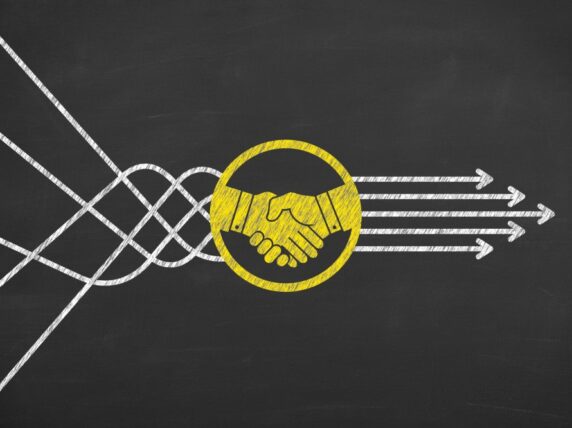Humanitarian assistance in Gaza: The difficulties of distribution
Following the attacks by Hamas on 7 October and Israel’s retaliation, the situation in Gaza has quickly escalated to being “one of the worst humanitarian crises faced by any civilian population this century“.
As stated, this week in the House of Lords, “currently every single person in Gaza is hungry, a quarter of the population are starving and struggling to find food and drinkable water, and famine is imminent.” 80% of the country is in emergency food insecurity. Much of the strips’, medical infrastructure has been demolished or is unusable, with only seven out of 24 hospitals left open in Northern Gaza, and medical supplies are scarce. Doctors are performing operations without anaesthetic, and Gaza is already experiencing soaring rates of infectious diseases.
As of November, water supplies were at 17% of pre-siege levels. 1.9 million people have been internally displaced, more than 80% of the population face wintery conditions, with warm shelter and clothes hard to come by. As of yesterday, Gaza’s health ministry, which operates under the administration of the Hamas authority, is reporting that 27,478 have been killed and 66,835 have been injured since the siege began.
The need for humanitarian assistance to reach the civilians of Gaza is of the utmost importance. Yet getting supplies to the people that need it most is incredibly difficult.
The blockades
There is only one entrance into Gaza for humanitarian assistance currently by land, which is the Rafah crossing in Egypt. Before assistance can enter, much of it must come through the Nitzana crossing, on the border of Israel and Egypt, for inspection.
A group of protesters, part of the Tzav 9 movement, have been preventing trucks of aid from leaving the Nitzana crossing for Gaza. This has caused a huge backlog of trucks.
With the Rafah crossing being the only access point to Gaza not in Israel, a huge bottleneck has been created. And with IDF forces wanting to inspect every truck that comes in, crucial assistance is coming into Gaza at a trickle.
The only other potential entrance to get assistance into the Gaza strip is by the Mediterranean Sea. Cyprus have outlined plan to transport cargo through a sea corridor, but admit the logistical issues may be insurmountable with the Israel navy and US forces controlling the seas. A shipment of aid has arrived via sea in an agreement between Israel and Hamas, brokered by France and Qatar, but any deal to have regular humanitarian assistance drops via the Mediterranean is yet to happen.
With several reports of gunfire from Israel’s forces hitting aid trucks, there is also obviously a risk in transporting aid into such a volatile warzone.
UNRWA defunded
By far the biggest supplier of humanitarian assistance to Gaza, as well as the Middle East, is UNRWA. They have 13,000 staff in Gaza helping with humanitarian efforts across the strip and providing shelter for refugees.
However, Israel has accused UNRWA staff of helping with the attacks in Israel on 7 October, which led to UNRWA firing the 12 staff who were allegedly involved. As a result of this, nine countries, including the UK and USA, pulled their funding from the organisation. In 2022, these countries’ contributions totalled $667million, so a huge amount of future funding is now in jeopardy.
You can read our position on UNRWA here.
Lack of infrastructure to provide and administer humanitarian assistance
At least half of the buildings in Gaza have been damaged or destroyed. As mentioned above, many hospitals are no longer operational, with some left unusable by Israeli forces during offensives. Refugee camps have been attacked and been hit by airstrikes. UNRWA and other shelter housing have been fired upon. Schools have been destroyed, as have mosques and churches.
In fact, there is virtually no safe space for civilians left to go. This obviously makes any sort of aid distribution incredibly difficult. At least 167 aid workers have been killed in Gaza since October 7, as well as at least 300 healthcare workers.
So even if humanitarian assistance was flowing into the country unabated, the practicalities remain incredibly difficult, with virtually nowhere safe left to get the 1.9 million displaced people the food and medicine they need.
ICJ ruling and what it means for humanitarian assistance reaching Gaza
The International Court of Justice (ICJ) ruled two weeks ago that Israel needed “to take immediate and effective steps to ensure the provision of basic services and humanitarian aid to civilians in Gaza.”
Yet, as it stands, getting help to those who need it is proving practically impossible.
We maintain that the most effective way to get aid into Gaza is by calling an immediate and permanent ceasefire. Without a constant flow of humanitarian assistance reaching the civilians of Gaza, this humanitarian crisis will only escalate.
Category
News & Views



